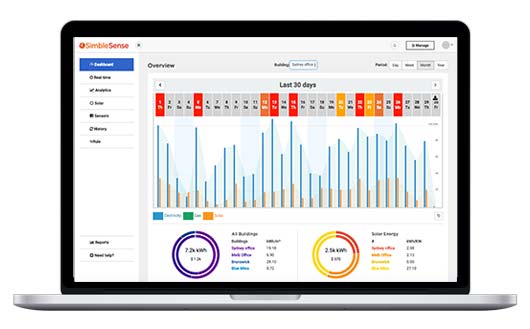Australia’s energy crisis could be a catalyst for smart meter software company Simble Solutions
Tech
Tech
Special Report: Skyrocketing energy costs have been at the forefront of Australians’ concerns in recent years — and with no end in sight smart power meters look like being a big part of the answer.
While energy retailers are slowly rolling out smart meters in Australia, it’s the technology that can be used alongside them that offers the most value.
Simble Solutions (ASX:SIS) makes a software-as-a-service (SaaS) platform that works with energy meters to monitor, control and monetise power usage in real-time. The system helps household and business energy users translate the data they receive from the meter into usable information.
Power crisis in Australia
Households and businesses are feeling the pinch in Australia’s power crisis. Even as energy sources gradually move from fossil to renewable, power prices are rising — up 63 per cent over the last 10 years according to competition regulator ACCC.
Almost half of that is due to over-investment in the national power network, the poles and the wires that transport electricity.
Between 2005 and 2016 the total value of the National Electricity Market (NEM) distribution network increased from $42 billion to $72 billion. Yet the number of customers using it — and paying for it — barely changed.
Taking control
That’s an opportunity for energy innovators such as Simble Solutions.
Real-time energy visualisation with alerts and insights, coupled with two-way smart control using Internet of Things technology, enables businesses to remotely manage and automate energy savings.
Simble chief Fadi Geha says data obtained via energy meters will drive significant change the energy industry.
Real-time software can tell a user where their greatest energy draws are, at what time of day, and how efficient extra sources such as solar panels may be.

The threat to energy retailers is real, as smart meters and companies like Simble, are enabling users to take control of their energy use and make informed decisions.
“In the UK, utility customer switching rates at 14 per cent are already much greater than global standards,” Simble says.
“The introduction of smart metering technology has potential to further accelerate this trend.
“Smart metering technology lowers entry barriers for non-conventional suppliers of energy services.”
This means that a telco or even a supermarket chain could become an energy retailer, increasing competition and potentially also causing prices to fall.
Where did the problem start?
A so-called ‘gold-plated’ network became a problem when, in 2009, Australians’ use of energy began to decline.
The first ever state-wide blackout, in South Australia in September 2016, came just before power shortages the following summer.
Muddying the water are energy companies blaming coal-fired power plants, the rising cost of gas, some politicians blaming renewable energy, and almost everyone blaming retailers for gouging customers.
Grattan Institute data shows that on average, across the nation 26 per cent of the price increase is due to retailers.
And finally, natural gas was indeed intended to bridge a power supply gap as decrepit coal plants were shut down.
However, an overly ambitious move by Santos in Queensland — where it promised to sell more gas than it had — saw the company buying up available supply and shipping it overseas, driving up prices for what was left in Australia.

Smart meters enter the fray
In February, in an effort to give households and businesses a chance to keep up, a House of Representatives committee recommended that smart meters were installed for all power users.
Victoria is currently the only state where smart meters are mandatory but they are being rolled out across the country.
The bipartisan committee said these meters would help both households and businesses manage their energy usage, and allow retailers to charge more at times of peak demand and less during off-peak periods.
Smart meters collect data for power distributors who pass it on to retailers. They then use this information to determine demand-based pricing.
This special report is brought to you by Simble Solutions.
This advice has been prepared without taking into account your objectives, financial situation or needs. You should, therefore, consider the appropriateness of the advice, in light of your own objectives, financial situation or needs, before acting on the advice.
If this advice relates to the acquisition, or possible acquisition, of a particular financial product, the recipient should obtain a disclosure document, a Product Disclosure Statement or an offer document (PDS) relating to the product and consider the PDS before making any decision about whether to acquire the product.